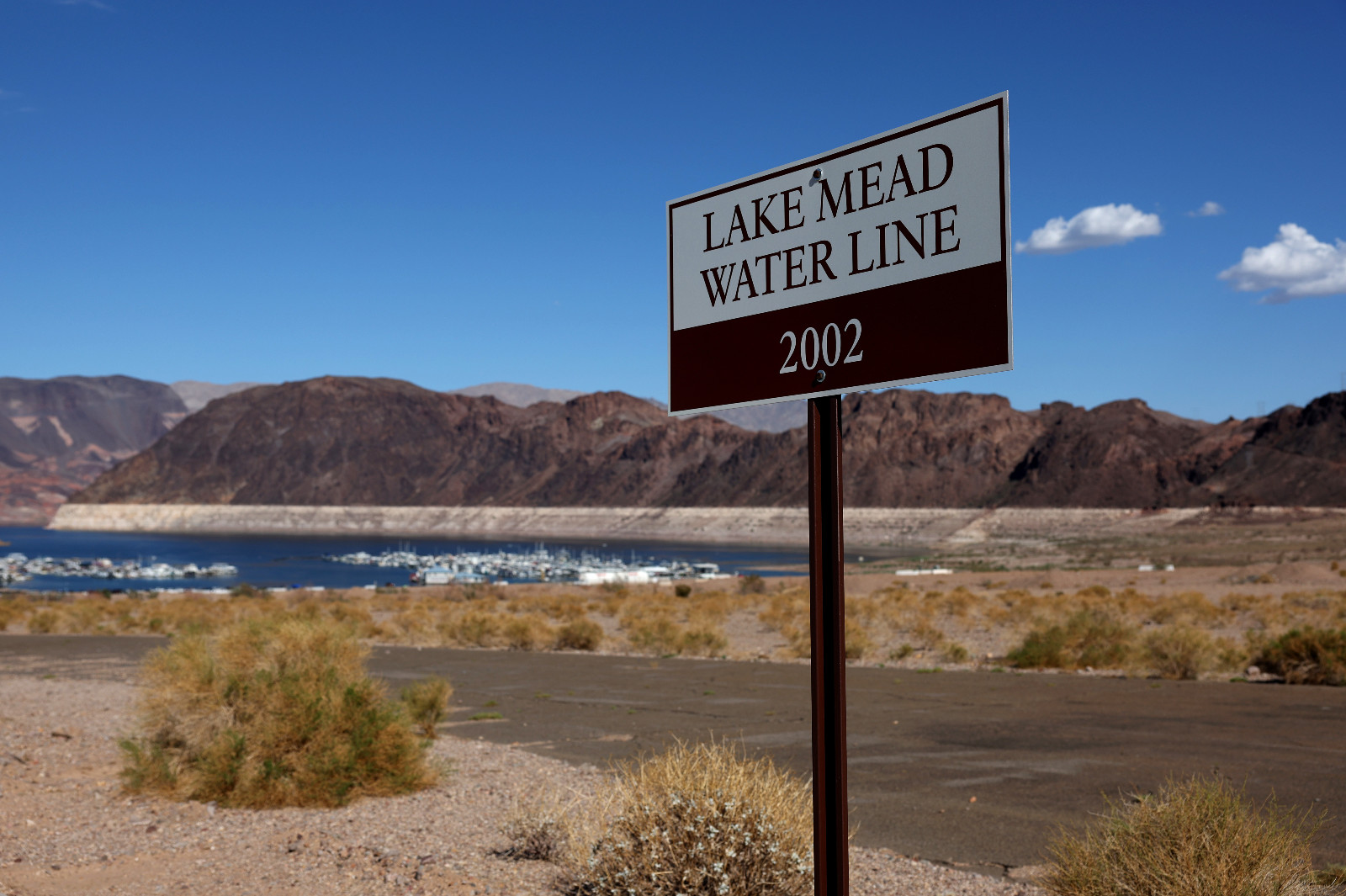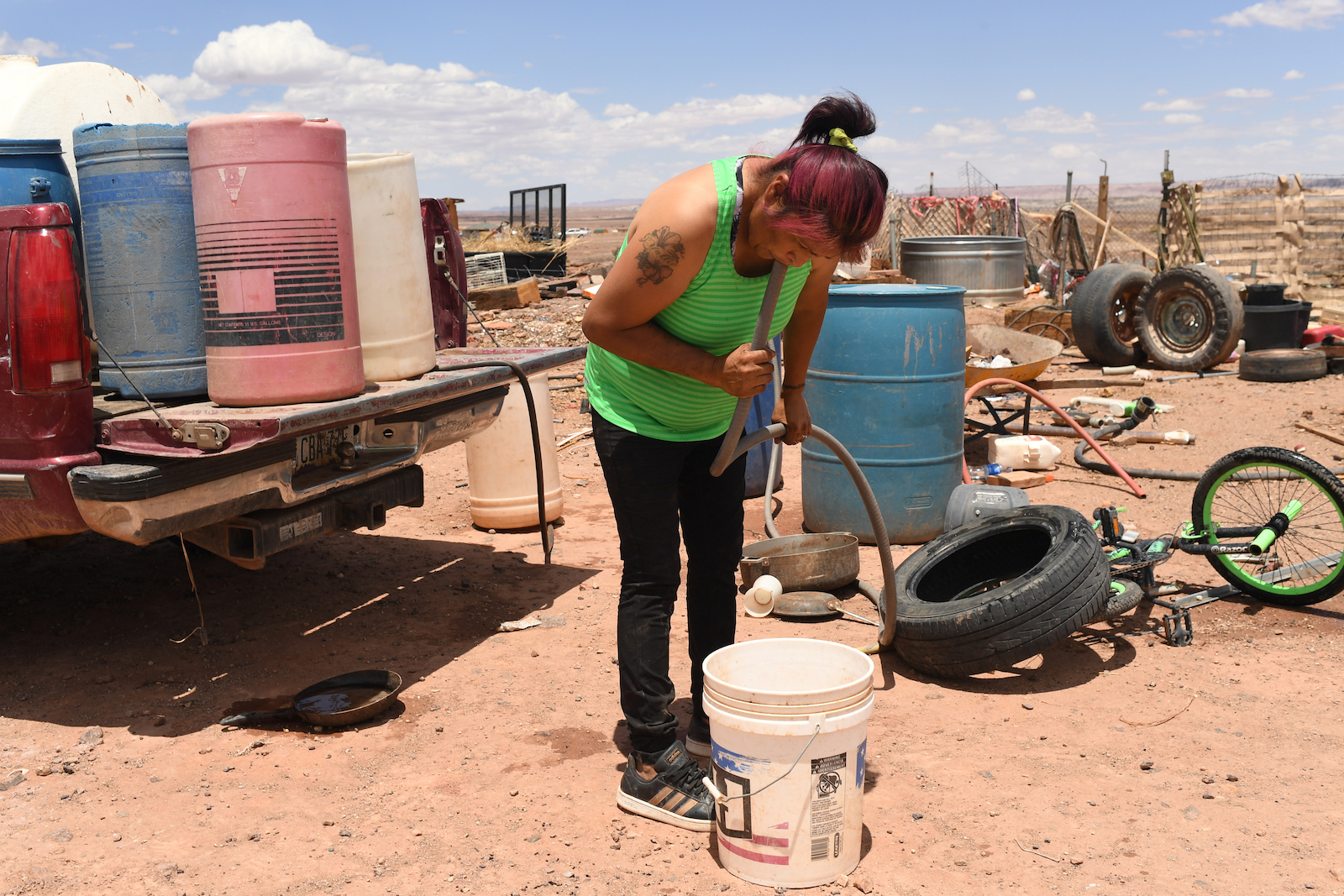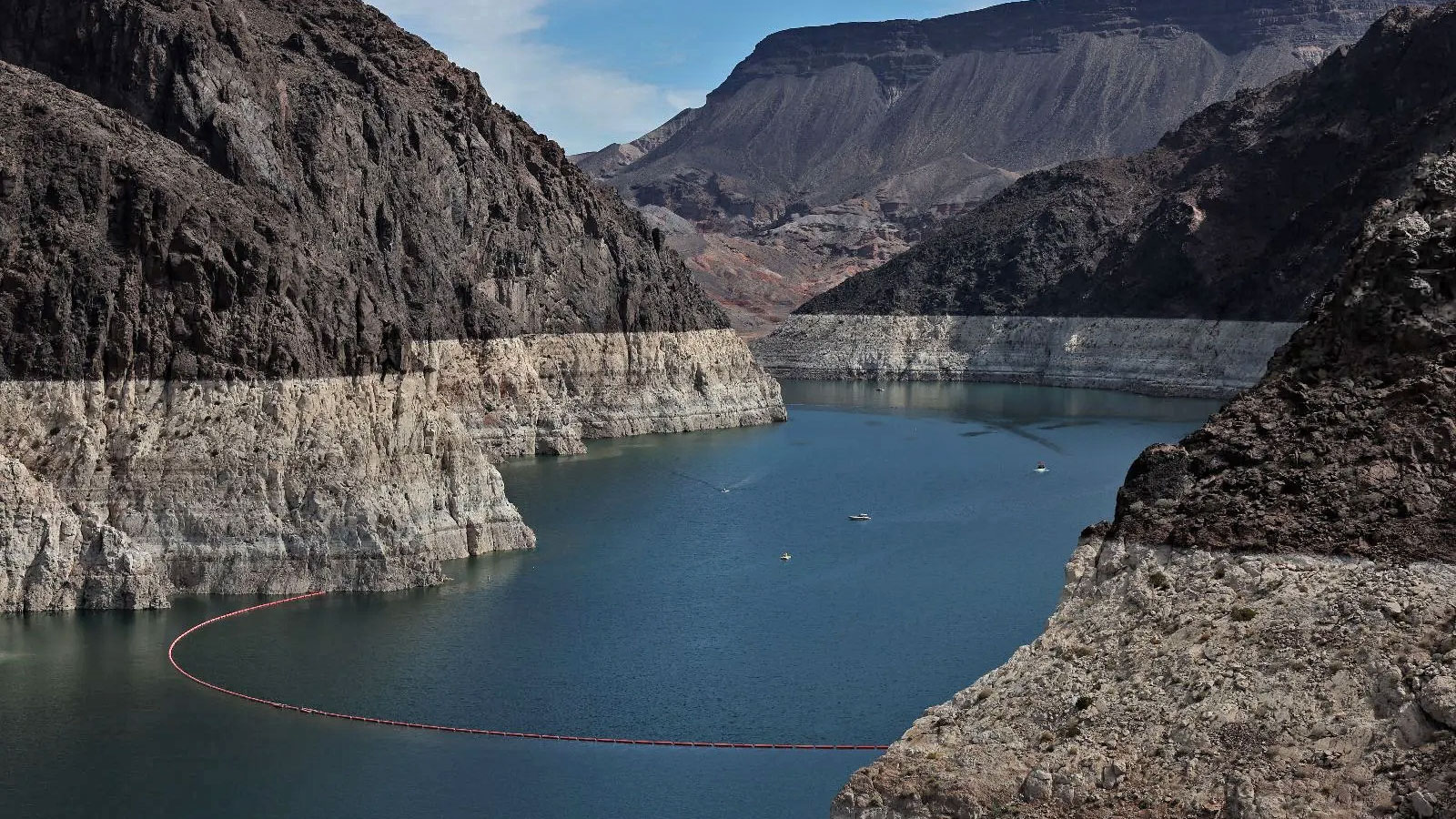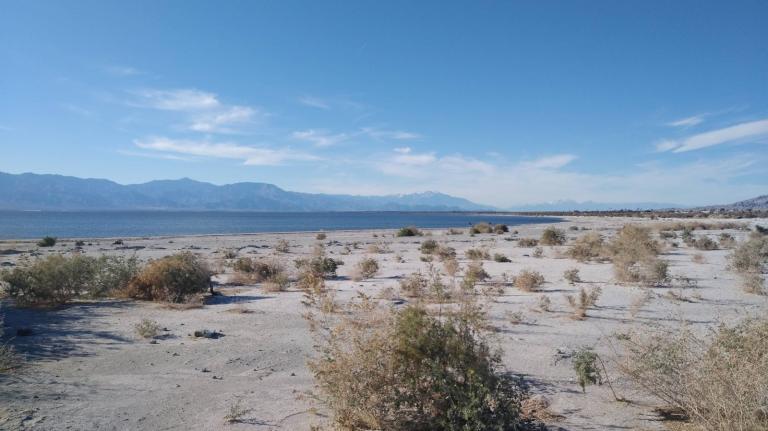This story is published in collaboration with High Country News. It is also part of the Grist series Parched, an in-depth look at how climate change-fueled drought is reshaping communities, economies, and ecosystems.
Amid historic drought in the Colorado River Basin, the Gila River Indian Community is taking a drastic step to protect their own water resources. In a statement last week, Governor Stephen Roe Lewis announced the tribe—located just south of Phoenix—would stop voluntarily contributing water to an important state reservoir. “We cannot continue to put the interests of all others above our own when no other parties seem committed to the common goal of a cooperative basin-wide agreement,” the statement reads.
Since 2021, Lake Mead, a crucial water supply for the region, has been boosted by voluntary water contributions from the Gila River Indian Community and the Colorado River Indian Tribes. The Colorado River is a crucial source of water in the West, supplying water to 40 million people across seven states and Mexico. For years, tribes and communities in those states have received river water based on a complex allocation system, but last week, the federal government announced historic water cuts that will force Arizona, the most impacted state, to reduce water withdrawals from the Lake Mead reservoir by 21 percent next year. Lake Mead’s levels are currently at a historic low of about 27 percent capacity.
By contributing their water to Lake Mead at affordable rates, the Gila River Indian Community was essentially subsidizing Arizona’s water supply while sacrificing an opportunity to sell that water at higher rates or put it to use on the reservation for agriculture or other industry. Now, facing cuts and other communities not willing to make sacrifices for the collective good, Gila River is putting its foot down. According to the statement, the lack of progress toward a sustainable water management plan left the tribe with no choice but to store the water independently rather than supporting the state water supply. “We are aware that this approach will have a very significant impact on the ability of the State of Arizona to make any meaningful commitment to water reductions in the basin state discussions,” Lewis said in the statement.
Meanwhile, the Colorado River Indian Tribes, which has also been contributing some of its water to help keep Lake Mead’s levels up, has opted to continue storing water in the reservoir. In a press release, chairwoman Amelia Flores reiterated her tribe’s commitment to an ongoing fallow and farming plan for their water allotments in response to the cuts. In other words, Colorado River Indian Tribes is sticking to a plan that forfeits the opportunity to maximize their agricultural and water revenues. “We recognize that the decades-long drought has reduced the water availability for all of us in the Basin,” Flores said. “We continue to conserve water and develop ways to use less water as we adjust to higher temperatures, more wind and less precipitation.”
These two decisions illustrate the difficult choices facing the thirty federally recognized tribes in the Colorado River Basin. Because tribes are sovereign governments, their water rights are determined with the federal government, rather than via the state, like cities and towns. Water rights allow tribes to maintain agricultural self-sufficiency, restore and steward the land, and support their communities. But to actually use their water, tribes face a unique set of challenges including inadequate infrastructure that limits some from accessing their water allocations. And for tribes still fighting to have their rights recognized, the ongoing shortage may make their battle even harder. As the region prepares for the cuts, tribes are working to ensure they have a voice during ongoing water management negotiations.

A 1908 Supreme Court decision established that tribes have the right to draw from the rivers that pass through their reservations in order to enable their self-sufficiency. But in its ongoing colonization of the West, the federal government filled the needs of white settlers before those of Indigenous nations. Through the Bureau of Reclamation, founded in 1902, hundreds of dams and reservoirs were constructed to divert millions of gallons of water from the Colorado River and other waterways to serve the growing settler populations of the West. Between 1980 and 2000, the basin was thriving, with water levels at its reservoirs nearly at full capacity. But even after two decades of drought, the unprecedented 27 percent reservoir capacity took officials by surprise. The Lower Colorado River Basin, one of the Bureau’s 6 water regions, consists of the Mountain and Southwest states as well as much of Southern California and is where tensions between individual states and tribes around water conservation policies are coming to a head.
Twenty-two tribes in the basin have secured recognized water rights and allocations, which they reclaimed through a mix of legislation, settlement, and court decisions. These allocations total around 3.2 million acre-feet per year, which represents roughly a quarter of the river’s annual supply. Arizona’s total allocation is less than 3 million acre-feet per year. The Department of the Interior tasked Basin States and Tribes to come up with a voluntary water conservation plan to add 2 to 4 million more acre-feet of water to stabilize the Colorado River and its two largest reservoirs, Lake Mead and Lake Powell.
But according to a July 22 letter to Tanya Trujillo, Assistant Secretary for Water and Science at the Department of the Interior, leaders from fourteen tribes in the Colorado River Basin argued that they were not being adequately consulted by either states or the Department of the Interior on a viable conservation plan.
The letter cites the federal government’s legal obligations to tribes, notably an executive order issued by President Clinton in 2000 that requires federal departments and agencies to consult with tribal governments when planning policies that impact their communities. “We should not have to remind you – but we will again – that as our trustee, you must protect our rights, our assets, and people in addition to any action you take on behalf of the system,” the letter said.
Nora McDowell is the former chairwoman of the Fort Mojave Indian Tribe and member of the Water and Tribes Initiative. She says that tribes have been forced to follow state and federal decisions about water use, even though tribes have successfully managed the river since time immemorial. She believes it is time for tribes to have a greater voice in conservation plans. “We always have been marginalized or not even consulted,” McDowell said of the ongoing conservation planning. “But the difference here is that we have the rights to that water.”
But twelve tribes are still fighting to get all of their water rights recognized. And as competition for water grows even fiercer, these tribes are left in an even more precarious position.
“The problems have existed for a long time on the river and the current situation is just exacerbating them and making it that much more fraught to try to negotiate water settlements,” Jay Weiner, water counsel for the Tonto Apache Tribe, which currently is in settlement negotiations, said. “There are political incentives for non-Indian water users essentially to try to put obstacles in the way of tribal development because otherwise that water is coming out of someone’s bucket.”
At least six cities in Arizona have declared water shortages because of the drought. And with water at dangerously low levels in both Lake Mead and Lake Powell, tribal water—whether in the form of voluntary contributions like the Colorado River Indian Tribes continues to make, or in the form of undeveloped tribal water rights—will play an important role in the region’s water supply. Because all water users have to cut back in response to the drought, tribes attempting to reclaim their water rights face negotiators reluctant to part with any water at all. Weiner, who also serves as water counsel for the Quechan Indian Tribe, says that the ongoing shortage has only further complicated ongoing settlements, “because as a practical matter right now, water rights users in the basin rely on those unquantified or undeveloped tribal water rights.”

Meanwhile, even tribes with recognized water rights face an uphill battle to fully take advantage of their water allocations. Some tribes simply lack the necessary piping infrastructure for either farming or drinking water, are too geographically spread out, or have had their water resources contaminated by extractive industry.
On May 27, 18 years of negotiations came to a close when Congress passed a bill granting the Navajo Nation 81,500 acre-feet of water annually from Colorado River Basin sources within Utah. Yet it is estimated that between 30 percent and 40 percent of households on the Navajo Nation, spanning territory in Utah, Arizona, New Mexico and Colorado, do not have running water. It is unclear how much these new water cutbacks will impact development of critical infrastructure for the Navajo, which will take years.
Nora McDowell of the Fort Mojave Indian Tribe believes it will take a collective effort to ensure a sustainable future for the Colorado River and water access in the region. That effort will require major changes to water management and tribes’ role in it. “It’s a critical time right now and people need to wake up and see what we’re dealing with,” she said. “We can’t keep doing what we’ve been doing for the last 100 years.”




